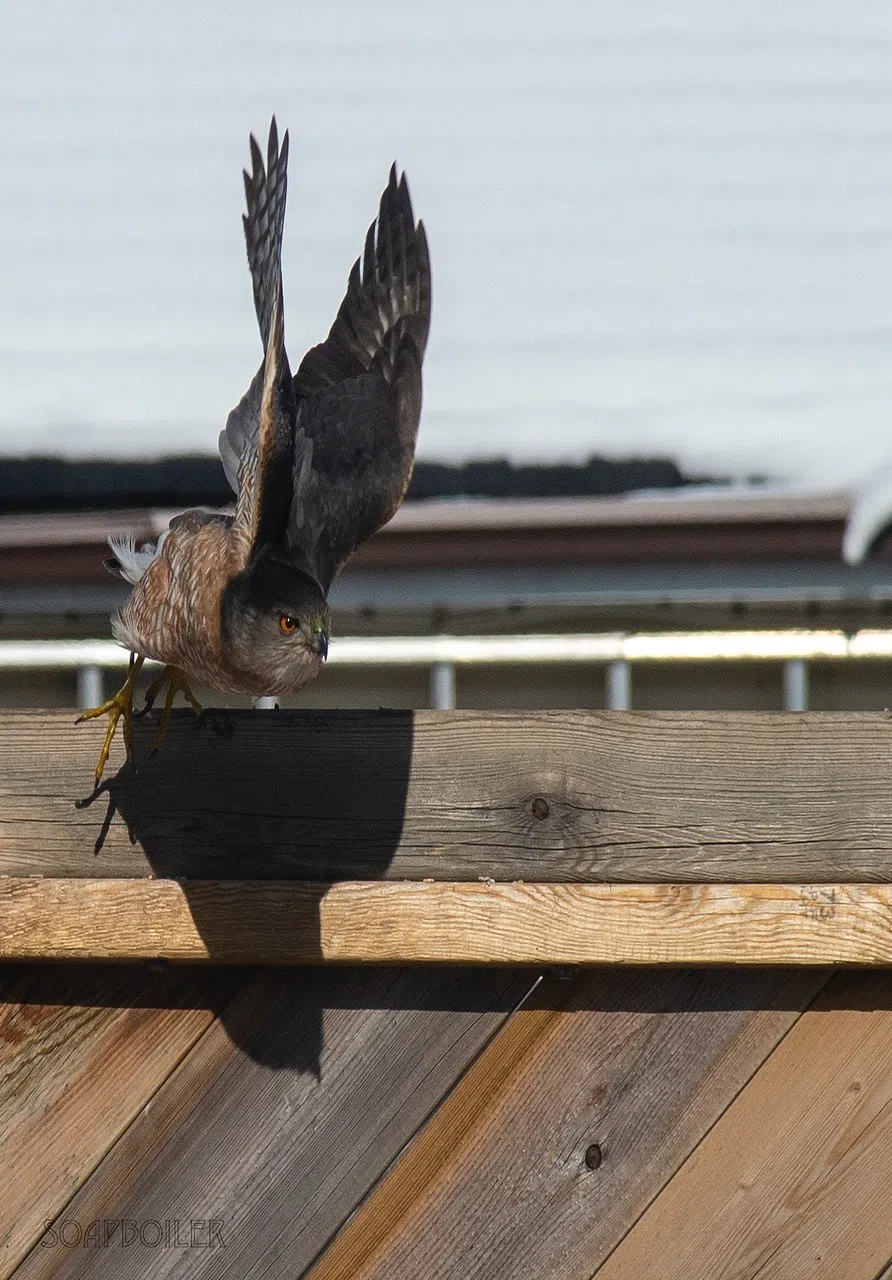
Cooper Hawk. Photo Credit: Vernon Chilton Nov 2019
Earlier this year a study showed that bird populations in North America had dropped by 25 per cent.
Some of the data used to reach that conclusion was from a program that includes local participants called Project FeederWatch.
The program exists worldwide. People who sign up record what types of birds and how many are spotted at feeders outside their homes.
The director of FeederWatch Canada Kerrie Wilcox says the user generated data showed the scope of issues facing bird populations.
“One of the things that came out of the research is that the decline of birds is widespread. It isn’t just one type or one area affected.”
While overall populations are in decline some species have seen population growth since 1970 according to Wilcox.
“Conservation actions do help, two of the groups of birds helped have been water fowl and birds of prey who have seen their population grow 110 per cent since 1970.”
Specifically she says Cooper Hawks have experienced a marked increase.
“They actually feed on birds that feed on feeders so FeederWatch reports very high numbers of Cooper Hawks.”
In order to ensure accurate data collection they require participants to follow specific guidelines when recording bird patterns.
You can order the kit online to participate through Birds Canada’s website.
Last year in Canada alone there were 60,000 participants in the program.
FeederWatch’s official observation dates begin Nov. 9th and run until Apr. 3.
FeederWatch starts Nov. 9! Dark-eyed Juncos have a huge range of geographic variation – there are 6 recognizable forms and 5 used to be considered separate species until the 80s! What kind of junco comes to YOUR feeders? Dark-Eyed Junco (Oregon) 📷 Vicki Miller #birds pic.twitter.com/JNvXRQszol
— Project FeederWatch (@Feederwatch) November 4, 2019
Reported by: Evan Taylor
Twitter: @evanrtaylor
E-mail: taylore@radioabl.ca








